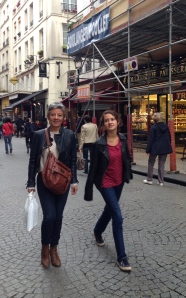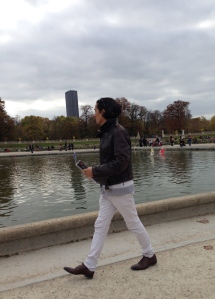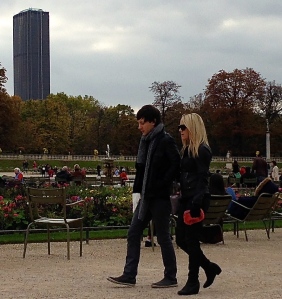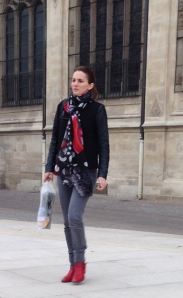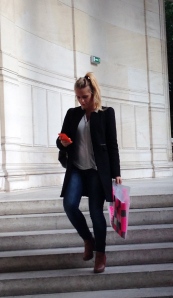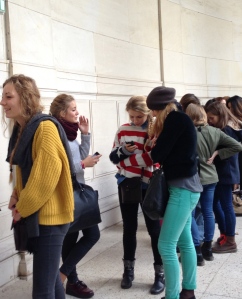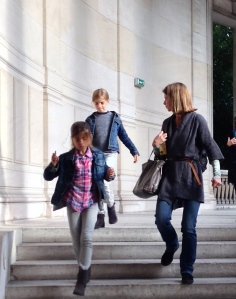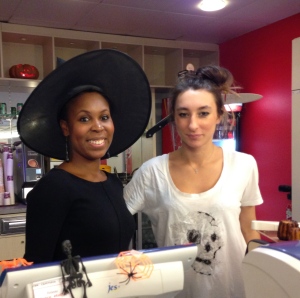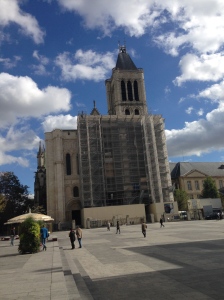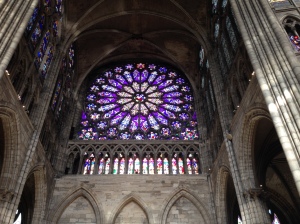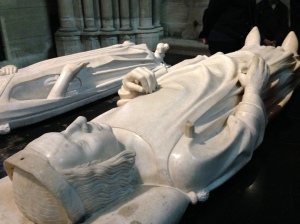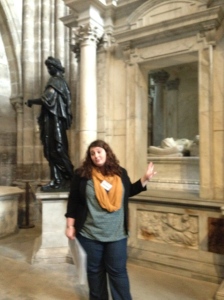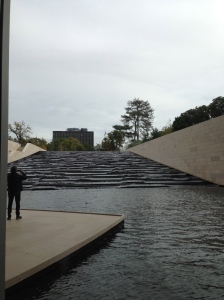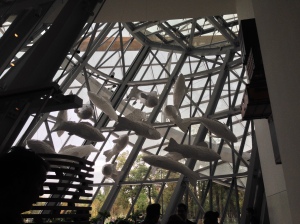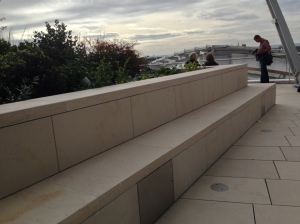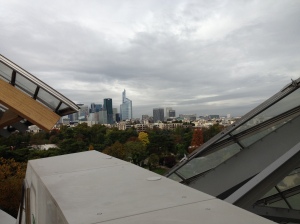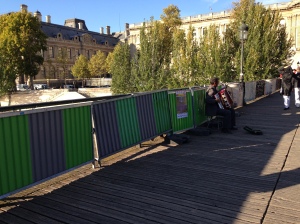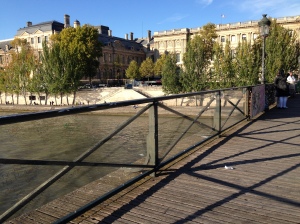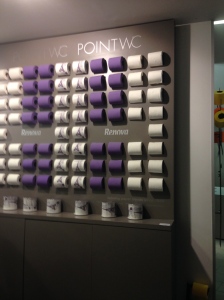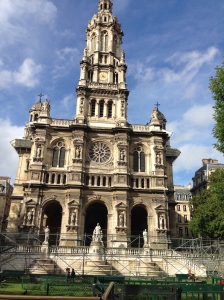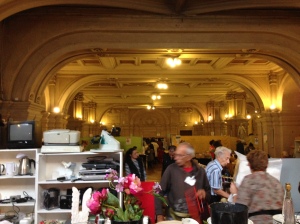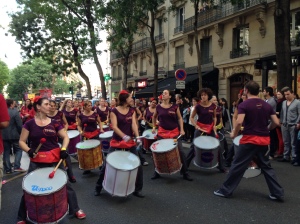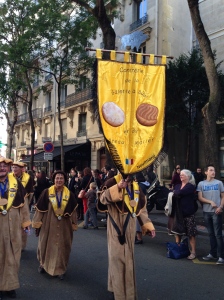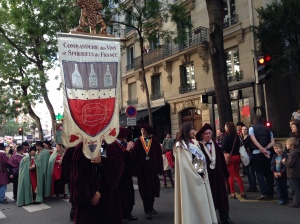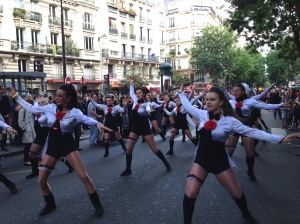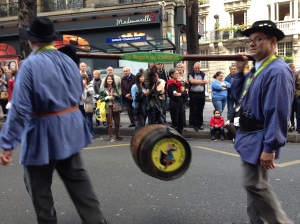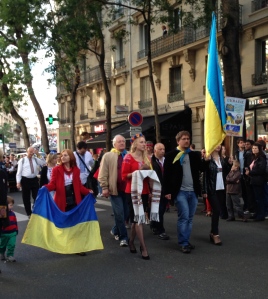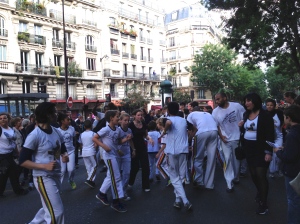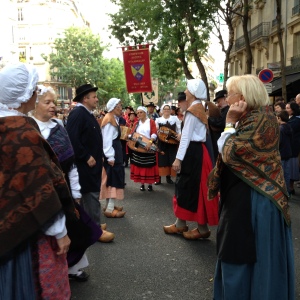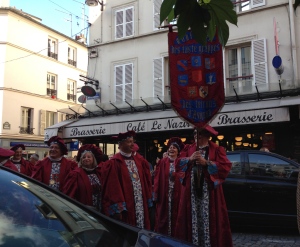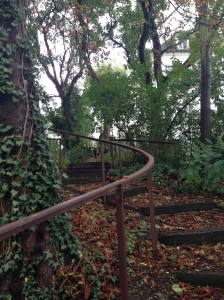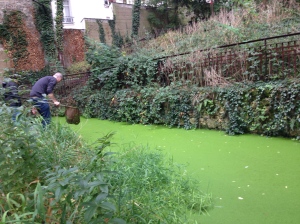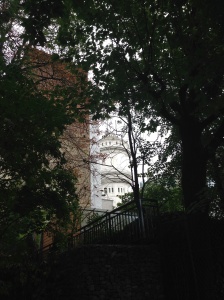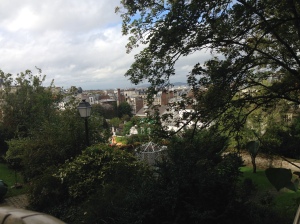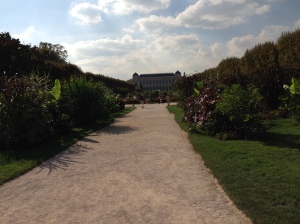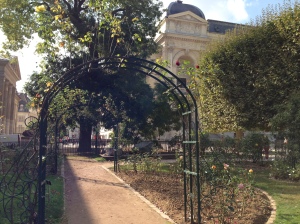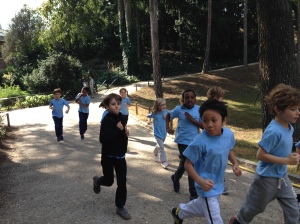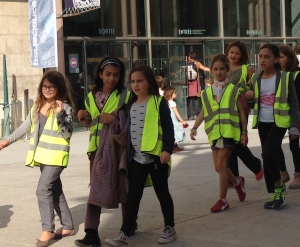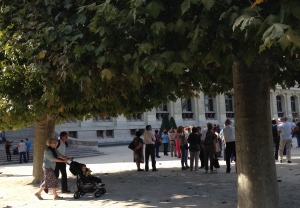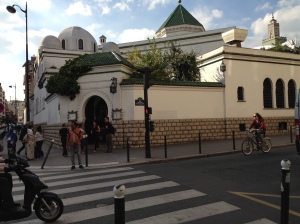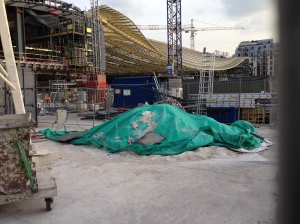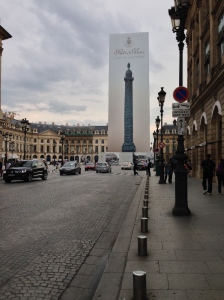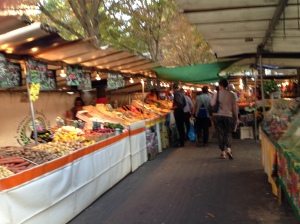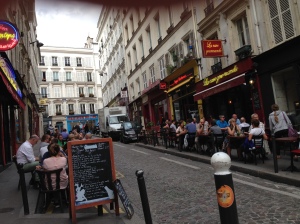Paris is the high fashion capital of the world, but Parisians, while influenced by the runway, have their own ideas about fashion. These seem based on group consensus, and if you don’t follow these parameters you simply are not stylish, at least not in the Parisian way. There is a certain sameness to dressing here that might seem a bit dull if you prefer a more creative or experimental style, but there is no denying that in the end it always looks elegant. There is creativity in the way the outfits are put together and the small details. What is the Parisian way?
Understated – Newscasters occasionally wear bright colors, but the general population of stylish Parisians is quietly elegant and neutrals reign. Hair is very casual, cut nicely whether straight or curly, but not remarkable. Make up is subtly applied and natural-looking. The occasional red lip I saw last winter is not around this fall. Women do wear make-up though, contrary to lore about French women not needing or wearing it. The largest Sephora store I have ever visited is located here, so clearly Parisan women are buying and wearing makeup.
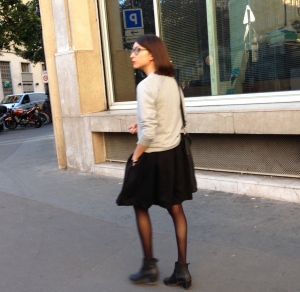
This is a classic Parisian look. Simple hair, high quality fabrics, a change of shoes and jewelry and she’s ready for an evening out.

These tourists are as cute as can be but their look is more “designed.” Non,non! The Parisian way is “effortless.”
Uniform – In the fall, a black leather motojacket, jeans and boots is de rigeur. This uniform is worn by women of all ages. It is ok to wear a brown or tan leather jacket, but black is by far the most common as it is considered the most versatile color. For casual wear, men wear the same outfit.
Classic – Alternatives to the uniform include a trench coat in black or beige. There is no other style of raincoat. You can do all kinds of interesting things to your trench coat like roll up the sleeves, leave it open, leave it open but tie the belt (never ever buckle the belt!) or remove the belt. No belt looks odd to me but I have seen it often enough I believe this is a deliberate choice, not just a lost belt.
If there is a chill in the air, wool coats appear and they are nice ones at that, beautifully cut in black or tan. I have seen a few colored coats in the stores, but not actually worn. Quilted jackets are also common on cooler days.
Accessorized – rare is the man or woman without a scarf. Men wear scarves in muted colors or simple patterns like herringbone or plaid. They tie them one of two ways – using the classic Euro loop or, looping the scarf around the neck one time so the two ends hang down in the front. For women, the sky is the limit for both color, pattern and tying methods. The big “neck brace” tie, in which the scarf is looped high up on the neck and shoulders seems popular this year, although certainly many other styles of scarf tying are used.
Shoes here are really attractive. Many are made in Spain, Italy and France, and some in China. The shoes and boots do much to elevate very simple outfits.
Selectively Trendy – Long, cozy, loose sweaters of all kinds, often worn with scarves, have been embraced by Parisians. On the other hand, while the runways are showing all kinds of widths and lengths of pants, the straight, tight skinny jean still predominates here, at least for fall.
Bicycling is a very popular way to get around town, and you must do this wearing just your regular clothes –no spandex allowed! There are also no helmets worn, which makes me cringe as the traffic here is very heavy-but that’s the Parisian way!
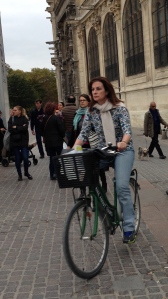
Wear your regular clothes to bike. Keeping your dashing white scarf out of the spokes is the sign of a real athlete.
Finally, here are the lovely ladies at the Alliance Française café modeling October’s most haute couture.
f

